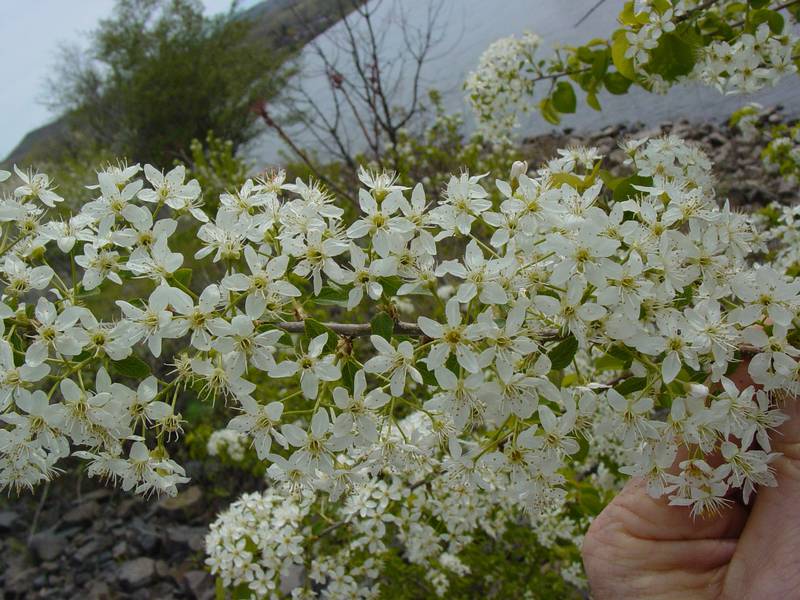Prunus virginiana
Prunus mahaleb
common chokecherry, western chokecherry, white chokecherry
mahaleb cherry, perfumed cherry
Leaf blades elliptic to oblong-obovate, finely serrate, 4-10 cm. long, bright green and glabrous on the upper surface, paler and glabrous to pubescent beneath.
Leaves alternate, deciduous, the petioles puberulent, 8-15 mm. long, the blades oval to broadly elliptic-ovate, 2-5 cm. long, abruptly acute, with fine, rounded, gland-tipped teeth, glabrous and pale green.
Inflorescence a terminal, pendant, many-flowered raceme, the uniform pedicels 4-8 mm. long;
calyx glabrous, the 5 lobes spreading to recurved, oval, finely glandular, 1-1.5 mm. long;
petals 5, creamy white, sub-orbicular, early-deciduous, 4-6 mm. long;
stamens about 25;
pistil 1.
Flowers 4-12 in short, leafy-bracteate racemes, the pedicels up to 2 cm. long;
calyx greenish-white, the 5 lobes entire, oblong-lanceolate, 3 mm. long, equal to the tube;
petals 5, white, oblanceolate, 7-9 mm. long;
stamens about 20;
pistil 1, simple.
Drupe ovoid, 8-11 mm. long, red to purple or black.
Drupe ovate, 6-8 mm. long, nearly black.
Prunus virginiana
Prunus mahaleb
- Local floras:
BC,
OR,
WA
- Local Web sites:
Flora NW,
PNW Herbaria
WildflowerSearch
iNaturalist (observations)
USDA Plants Database
- LBJ Wildflower Center
- SEINet
- Plants of the World Online
- Encyclopedia of Life
- Wikipedia
- Google Image Search



